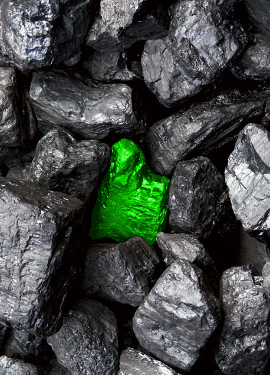Clean coal capture claimed
 The mining industry is taking steps to reduce the hefty toll of carbon emissions from coal-fired power stations.
The mining industry is taking steps to reduce the hefty toll of carbon emissions from coal-fired power stations.
A trial is nearly over at Australia's first carbon capture plant, as the industry looks to “clean coal” technologies as a way to do something about its carbon contribution.
The Callide Oxyfuel Project has seen carbon capture technology retrofitted to an existing power station.
Queensland engineers say there has been some positive results from the $245 million plan to clean up CS Energy's Callide A coal-fired power station at Biloela.
The demonstration wraps up this month, but over the last two years it has shown the Callide plant (built in 1965) could provide a 30-megawatt supply while capturing most of its carbon emissions.
Project director Chris Spero says air pollution in the region has fallen by more than 85 per cent.
“When you burn coal you produce waste gases. Normally these waste gases go up the chimney stack into the atmosphere,” Mr Spero told the ABC.
“We've got a process now to burn the coal differently in a different way. It's called oxy-fuel combustion and that concentrates the CO2 in the waste gas.
“We then process the waste gas to extract the carbon dioxide.
“This project has been the largest of this type in the world, but it's only 30 megawatts.
“So where we need to be is getting to the next scale up, which is about 150 megawatts, and then ultimately to full commercial scale which is 500 to 700 megawatts.
“Over the next 12 months, our principal objective will be to consolidate what we've learnt from here, capture that into technical manuals and commercialisation agreements and try to get the technology into the marketplace.”
Some argue that trying to clean coal is a meaningless endeavour in the age of renewable energy, but with 40 per cent of the world's electricity still being generated in coal-fired power stations, Spero and his team say their technologies will play an important role in fighting climate change.








 Print
Print